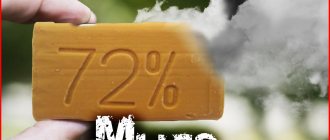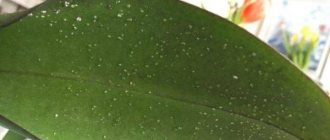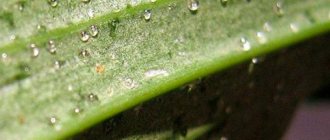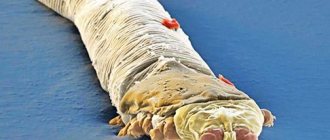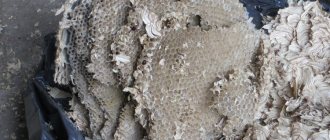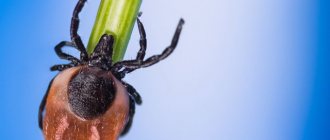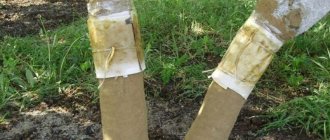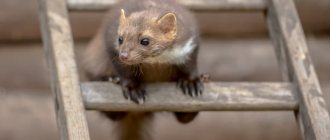In the summer, the appearance of flying insects in the house is especially annoying. At the same time, it prevents people from opening windows and resting normally. Especially flies, which not only buzz and crawl over the body, but also land on food.
Flies lay about 100 eggs at a time, and they can end up on anything. To get rid of the problem, adhesive tapes were invented. But frequent replacement of tapes makes you think about making them yourself.
How Velcro works
Velcro against flies is a very simple and yet effective design. This is paper or oilcloth tape covered with a sticky viscous mass. The operating principle is based on the interaction of two components:
- aromatic substances that attract insects;
- a sticky mixture that traps flies.
Sticky tapes are placed in those places where the greatest concentration and activity of flies is observed. The smell attracts insects, which, touching the adhesive layer, stick and soon die of hunger.
Duct tape
Interestingly, the presence of insects already adhered to the tape not only does not repel flies, but, on the contrary, attracts them.
How to make Velcro for flies with your own hands quickly and cheaply
Sticky tape is an effective weapon against flies. Its smell attracts insects, and the glue prevents them from freeing themselves. But you need a lot of such traps. Over the summer, a standard two-room apartment can cost up to 20 pieces, and in private country houses or rural areas - even more. As a result, protection from annoying “clattering noises” costs a pretty penny. But there is a way out - do it yourself Velcro for flies.
A simple solution from this instruction will save you up to 90% of the cost of the trap in the store. Every home has the necessary components, so 9 out of 10 people who want to make a “fly trap” won’t even spend money on it. Approximate implementation time is 10-20 minutes.
Advantages of adhesive tape
Fly tape is considered one of the most used insect control products. Its popularity is due to a number of factors:
- absence of toxic components in the composition, safety for people and pets (adhesive tapes can be used at home, in kindergartens, hospitals);
- long service life (from 1 to 6 months);
- low cost (even purchased Velcro will not require large financial outlays, but homemade ones will cost practically nothing);
- efficiency;
- versatility (the product can be used in any room, as well as outdoors).
Another advantage is the fact that sticky tapes help fight not only flies, but also other flying insects.
We must remember that the lifespan of Velcro is reduced if you use it outdoors. This is facilitated by dust and small debris falling on the sticky surface.
An unusual option for fighting is predator plants
Plants that feed on small flies, mosquitoes and other insects. They do not require special care, tolerate unfavorable conditions well and do not take up much living space, but, nevertheless, they fight flies well.
In conclusion, it is worth noting that the reproduction of flies occurs quite quickly, which is why they are extremely popular among biologists. They are an ideal object for conducting many experiments. The genetic code of these insects has many similarities with humans. Thanks to this, scientists have the opportunity to develop new means of combating cancer and hereditary diseases.
To a greater extent, fruit flies are not pests; they process waste and enhance decomposition processes, returning minerals and oxygen to the cycle of substances, but, nevertheless, they extremely poison human life. When used in combination, the remedies proposed in this article will help make life easier and get rid of annoying fruit flies.
Tags: fruit fly, trap, hand, yours, vinegar
About the author: admin4ik
« Previous entry
Homemade fly strips
To successfully create working Velcro at home, you will need 3 components:
- base (the tape itself);
- aromatic component (bait);
- sticky mixture.
Thick paper is most often chosen as a base, from which strips 7-8 cm wide and about 1 m long are cut. But it is better to use special strips for hair removal. The material from which they are made includes synthetic fiber. Thanks to this, the adhesive mass is not absorbed. A hole is made at one end of the tape for the rope, and a weight is attached to the other end so that the tape does not curl. You can use, for example, a clothespin as a load.
To make Velcro for flies, products such as honey, jam, preserves, sugar syrup are used as bait, and rosin or resin is used for the sticky layer.
From rosin
Rosin is perhaps the most popular material used in creating adhesive tapes for catching flies and other insects. There are quite a few recipes for rosin-based sticky mass. Here are a few of them:
- a mixture of rosin and castor oil in a ratio of 3:2;
- 150 g rosin, 100 g linseed oil, 30 g jam;
- 200 g rosin, 100 ml castor oil, 50 g natural honey, 20 g glycerin oil.
The oil ingredient is needed so that the mixture does not dry out longer and remains viscous.
Before making Velcro, you need to prepare the mixture by thoroughly mixing all the ingredients. To do this, rosin is melted in a water bath. It is most convenient to do this in a tin can, which can be thrown away after preparing the mixture. When the substance has completely melted, add the remaining components and mix thoroughly. The mass should be homogeneous.
Rosin
Generously lubricate the tape with the hot mixture. The mixture must be applied in a fairly thick layer so that the insect cannot escape from the trap.
From tree resin
Another option for fly tape sticky mixture is resin based. You can assemble it yourself or purchase it in specialized stores. When making an adhesive mass from resin, it is better to use sugar as bait, but you can take honey or molasses, and add wax to enhance stickiness. The composition should also contain vegetable oil or castor oil. The volume of these components should be half that of the resin.
The recipe for the sticky mixture could be like this:
- resin – 300 g;
- flaxseed (or other vegetable) oil – 150 g;
- honey – 50 g;
- wax – 10 g.
The preparation principle differs little from the mixture with rosin. The resin and wax are melted in a water bath, the remaining ingredients are added and mixed. Cover the prepared paper strips with the hot mixture.
From a tin can
An ordinary tin can can become Velcro for flies. To do this, wrap the empty jar with tape or insulating tape, which is then removed. A sticky layer remains on the outer surface of the jar. For better results, you can make several holes in the jar and place a light source inside that will attract insects.
This design is unlikely to keep out large insects, but it is quite effective against small flies and mosquitoes.
From a plastic bottle
A plastic bottle trap is often used to get rid of flies and small midges. The bottle is cut into two parts, and the part with the neck should be approximately half as long. Water is poured into the bottom, to which sugar, honey or jam and a little yeast are added. Then the upper part is inserted into the lower part so that the neck faces down. It is very important that the neck does not touch the liquid. Flies attracted by the bait fly in and then cannot get out
Scotch
The simplest version of homemade flypaper from flies. No preliminary preparations are required. The tape is cut into strips of the required length, which are then hung indoors.
From adhesive plaster
An adhesive plaster is a kind of sticky tape for flies. In order to attract more insects, the patch can be soaked in sweet syrup. It is more convenient to use a large adhesive plaster intended for postoperative wounds.
Band-Aid
Bottle trap for flies and fruit flies
This is a closed type trap, but it will also attract insects with a sweet smell and catch them with a sticky substance. To make it, use a regular 1.5-2 liter plastic bottle of water or soda.
- The top third of the bottle needs to be cut off, and 200-300 ml of viscous sugar syrup should be poured into the bottom of the lower part. You can add a little honey, beer or fruit juice or fermented jam to the syrup. The consistency should be viscous enough so that insects quickly drown in it and are unable to escape.
- Insert the cut top part of the bottle into the bottom part with the neck down, without a cap. Fasten the two parts with a stapler or tape.
- In order for flies and flies to more actively fall into the bottle, its edges should be lightly greased with sweet syrup and placed where insects fly most often.
If you plan to place the trap outside, it is better to add a little white vinegar to it to repel honey bees and thereby protect them from death.
Purchased tapes
Stores offer a fairly wide range of sticky fly tapes. They all operate on the same principle, but differ in size, composition of the sticky layer, and therefore in efficiency and service life. The greatest demand is:
- Raptor;
- Fumitox;
- Clean house;
- Taiga;
- Destructive force.
Most often, one tape is enough to protect a room of 10–15 m2. Many manufacturers use pheromones as bait, and a composition based on rubber glue as a sticky layer.
Trap from a jar and an ultraviolet flashlight
This remedy is relatively effective against all types of flying insects.
To make it you will need:
- scotch;
- glass jar;
- a small ultraviolet flashlight, for example, in the form of a keychain.
You can wrap the jar with tape with the adhesive side facing out, or you can transfer the adhesive layer to the surface of the jar itself.
In the second case, the outside of the jar should first be wiped with a cloth soaked in alcohol, vodka or cologne to degrease the surface. After this, you need to wrap the jar with tape with the adhesive side inward, without touching the glass surface with your fingers, and expose it to the sun for 2-4 hours. After this time, the tape must be carefully removed. The adhesive layer will remain on the jar. The first option is, of course, simpler, but the second is more effective.
Place a UV flashlight in the prepared trap and place the trap in the area where flies fly most often. Insects attracted by the light will land on the surface of the jar and stick to its surface.
Step-by-step instruction
Prepare rosin, a lighter (or a mini-burner or hair dryer) and a metal container where the mixture will be heated and boiled. To avoid burning your hands, take the heating container with tongs or tweezers.
Take the container with tongs, place rosin on it and start heating. Wait until the mixture boils and hold for 1-2 minutes until all the turpentine evaporates.
Add oil to boiling rosin and heat the mixture for another 30-60 seconds. Castor oil can be poured out with a syringe. Be careful not to get the oil into the fire to avoid burning your hands or causing a fire. Fat burns well.
Wait until it cools completely. After 10-20 minutes the mixture will thicken. If the proportion is chosen correctly, the glue will be moderately thick. To check the condition, take a match and dip its tip into the impregnation. When you remove the match, the thread of glue should stretch out more than 10 cm. The mixture should be plastic - the torn thread that sticks to the match should be pulled together into one drop.
Prepare paper, fastened sticks, a match for spreading and the glue itself. If you have a standard sheet of paper and not ready-made tape, cut a strip of it 10 cm wide and 30-40 cm long.
Insert the tape between the sticks fastened at the base as shown in the image. Wrap the strip around the sticks twice and tighten slightly until it is firmly in place.
Apply glue to the tape. Holding it by the sticks with one hand, spread the impregnation over the entire strip with a match. Try to keep the layer even, but don't overdo it. There is no need to cover all the paper with glue. For a 30 cm tape, 3-4 heavy drops of glue (as in the photo) are enough.
Now twist the strip tightly, wrapping it tightly around the sticks. Thanks to this action, the glue itself will spread over the entire surface of the paper and you will not have to lubricate the back of the tape - it will “get dirty” with impregnation during twisting. Excess rosin and oil will come out at the edges of the tape. Take them away.
To achieve maximum penetration, the tape must be slightly heated. Don't overdo it and don't let the fire come into contact with the paper because the oil burns well. After heating, the glue will be saturated and the paper will acquire a yellowish color (gray areas will initially be visible). Now roll and unfold the strip several times. To even out the layer, pull the paper through the fastened sticks on which it was wound.
DIY adhesive tape is ready. If you did everything correctly, the glue will stick to your finger and leave thin threads. Now you can hang the Velcro in a place with a maximum concentration of fruit flies, securing it to a clothespin. This trap will work no worse than the store-bought version. You can change it when there is no free space left on it or you notice that new flies are able to free themselves.
How to choose a proportion
Since rosin and oil always have different properties, it is impossible to recommend an ideal ratio. Approximate proportions are 2 parts rosin and 1 part oil. If, after the boiled glue has cooled, it turns out to be too liquid, melt it and add a little rosin. If too thick, add oil.
To prevent the Velcro from curling, attach a weight to its end. This could be an ordinary clothespin, a few paper clips, or something else.
To make flies pay increased attention to your trap, add a few drops of honey or caramel to the finished glue. It makes sense to mix impregnation only with something that has a smell. There is no point in adding sugar
In order not to prepare the glue every time, you can make it in advance and put it in a warm place in a closed plastic jar. If you used castor oil, the mixture will not thicken or form a crust.
There is no point in adding sugar. In order not to prepare the glue every time, you can make it in advance and put it in a warm place in a closed plastic jar. If you used castor oil, the mixture will not thicken or form a crust.
Video on Youtube:
There is so much chemistry in our lives that we don’t want to use toxic drugs again, especially if there is a harmless alternative. A popular life hack is a DIY fly trap. This simple device is replete with many modifications, can be made in 5 minutes from scrap materials, and most importantly, it quickly and in large numbers “catches” annoying and unceremonious insects. So, at least, say those who use homemade flytraps. Let's try to figure it out impartially,
For foam plastic
Not every glue is suitable for gluing foam plastic. To make it yourself, you need to take slaked lime and cottage cheese in equal quantities. The ingredients are mixed until smooth. The mixture hardens quickly and should be prepared before use.
Reference! The special glue for polystyrene foam can be replaced with the carpentry glue described above.
Self-made foam adhesive should not contain harmful components:
- Solvents based on acetone.
- Gasoline, kerosene, white alcohol.
- Esters and alcohols.
- Flammable components.
- Chlorine derivatives.
Why fight
When the number of insects in the house increases, the question arises of how to get rid of them. Flies belong to the class of dipterous insects. These are small and light pests that feed on liquid food sucked through the proboscis. They love sweets - if there is jam or honey in the room, be prepared for pests to be here.
It seemed that, apart from irritation, the insects were not dangerous, but they pose a serious threat.
- Blowflies hide larvae in fish or meat products. After a while, maggots appear.
- They spread viral and bacterial diseases. Intestinal diseases and worms will usually spread. They become infected when the fly comes into contact with dirt. If she comes into contact with food or things used in everyday life, the chances of infection increase.
- Burner flies are active bloodsuckers. They live near livestock, but can also fly into the house. Insect bites cause irritation due to the poisonous secretion. It is a carrier of the following diseases: anthrax, sepsis, staphylococcus.
- House flies leave larvae in any food, not just meat.
- Pests feed in landfills, sewers and other unpleasant places. Then they fly into the house, spreading tuberculosis, E. coli, etc.
Tsetse is considered the most dangerous fly in the world. It lives in Africa, but poses an almost mortal threat.
How to make your traps more effective
The likelihood of flies disappearing soon will increase if you use different types of traps. To catch more flies, it is better to make several traps and place them in different places in the apartment (or garden).
Important: flies should not have the opportunity to intercept a piece of food outside the trap. The effect will be much greater if the fly bait food is the only one available. Therefore, all food products must be put away in cupboards and the refrigerator, and fruit drops, if we are talking about a garden, must be taken outside the garden and buried.
